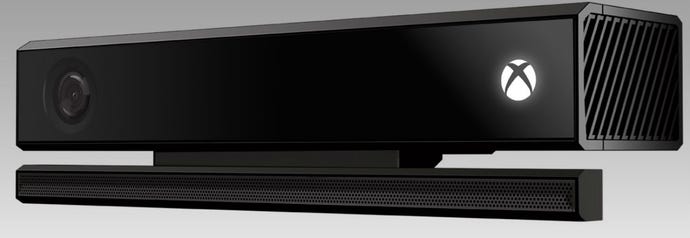Better Without Kinect
Eurogamer's Tom Bramwell explores how Microsoft is making the best of a bad situation and expects us to smile.
This article first appeared on USgamer, a partner publication of VG247. Some content, such as this article, has been migrated to VG247 for posterity after USgamer's closure - but it has not been edited or further vetted by the VG247 team.
It must have hurt to do it, but Microsoft's decision to strip Kinect out of Xbox One and lower the price of the console feels like the right one overall. The problems it solves were simply too important to get hung up on the problems it creates.
This is pretty much the same decision Sony executives made about the PlayStation Camera behind closed doors early last year, allowing them to hit a much lower price than Microsoft at the PlayStation 4 launch. That decision upset a few developers and publishers who had been told they could plan around the camera's inclusion with confidence, but those tensions have been smoothed over by the console's success.
Xbox One has sold in decent numbers as well, but comparing the figures to Xbox 360 was never going to impress anyone while PS4 was busy setting new records. Microsoft waited to see whether Titanfall would bridge the gap and allow it to maintain a higher price, but when that didn't happen and Kinect Sports Rivals flopped, the logic of cutting the price and ditching Kinect to pay for it must have been too compelling to ignore.
It's another embarrassing U-turn, then, but Microsoft gets some cover with investors at least by pointing to new management. CEO Satya Nadella and Head of Xbox Phil Spencer are both recently appointed or promoted, and they are setting a new strategy, which is the sort of thing financial markets understand. It will be harder to look the console's early adopters in the eye, but then most of them were Kinect's loudest detractors, so they may even view the situation as an improvement.
Removing Kinect from every Xbox One sold will also discourage Kinect game developers, of course, but as the old joke goes, I'm sure both of them will get over it. The former Xbox 360 peripheral was once a record-setting sales success, but only once, and a lack of compelling new gameplay ideas has been its main problem for the last three years.
In the here and now, it also sets the stage for next month's E3. The significance of everyone's favourite annual trade show is often overstated, but it can still be a powerful tool, as Sony proved last year, and this is now Microsoft's most important appearance in Los Angeles for a decade. Last year it couldn't get people to focus on Xbox One games, but making this announcement now means it stands a better chance of directing our attention, rather than just straining to see how many feet it can fit in its mouth.
All the same, it's hard to look at the U-turn on Kinect as anything other than the least worst option on Microsoft's table. "We'll continue to innovate on Kinect. I think it's an important differentiator for us," Spencer says in the video above, but nobody will be fooled by this or the promise of a standalone Kinect at some unspecified point in the autumn. What few games there were have flopped and the market segmentation that will begin next month means Kinect is essentially dead in its current form.
Embarrassment aside, another issue is that any faith anyone still had in the original Xbox One vision has surely now evaporated. Through all the twists and turns of the last 12 months, Kinect was the one thing Microsoft really believed in. Less than three months ago, UK marketing chief Harvey Eagle still insisted "Kinect is an absolutely integral part of the Xbox One experience". What's left? Skype?
Perhaps Microsoft has tremendous faith in exclusive games like Sunset Overdrive, Quantum Break and the next Halo, but it has a smaller stable of studios than Sony, and while it has been racing to build new bridges with independent developers over the last few months, its indie friends are far less numerous and far more cautious than those who work with the opposition.
Truth be told, neither Sony or Microsoft is nailing exclusive games yet, but that situation still favours PS4. Even at £349 or $399, Xbox One finds itself standing toe to toe with its direct competitor in every category except the one that counts: performance. Xbox engineers must work quickly to release the power Kinect was hogging so that developers can close the gap. In the meantime, Microsoft remains exposed to whatever Sony wants to do next. What if Andrew House cuts the PS4 price next month? What then?
Xbox One has a problem closer to home, too: Xbox 360. It's still a great system with a huge catalogue of games, and it's no slouch with new stuff either. I don't know about you, but I use mine all the time, and I'm a core gamer whose mind is always on the next big thing. If I'm still not ready to say goodbye, why will the mass market? Kinect clearly wasn't the answer, but at least it was an attempt at one.
The playing field between PS4 and Xbox One feels more level this morning than it did yesterday, then, but that doesn't mean it's all champagne and touchdowns from here on out. Microsoft may finally have arrived at the conclusion most of us reached several years ago -- that Kinect wasn't good enough -- but plenty of challenges still lie ahead. Can Xbox One meet them? We'll start to find out next month.

